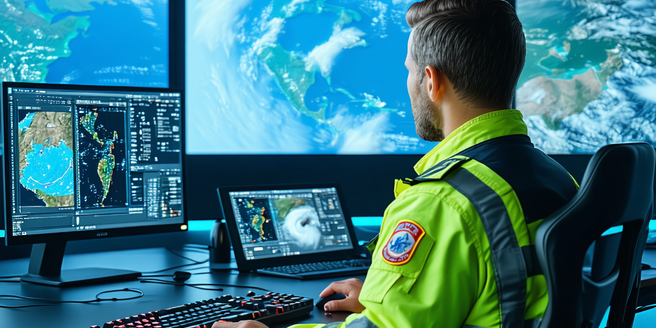
Understanding the Need for Enhanced Weather Alerts
Weather alerts play a crucial role in safeguarding communities by providing timely information about impending natural hazards. However, traditional systems often fall short in reaching all demographic groups efficiently due to various limitations like inadequate dissemination channels or outdated technology. There is an increasing need to enhance these alerts, ensuring they are more precise, timely, and accessible to everyone. Improved weather alerts can significantly minimize the impact of severe weather by allowing communities and individuals to take necessary actions in advance. Making alerts more relatable and understandable, with language and formats adapted to diverse audiences, is also essential. This adaptation ensures that every individual, irrespective of their location or technological access, receives and understands the required information to protect themselves effectively.
Technological Advances in Weather Monitoring
Recent years have witnessed remarkable advancements in technology that enhance weather monitoring capabilities. These technologies include satellite-based imaging, high-resolution radar systems, and sophisticated computer models that predict weather patterns with greater accuracy. With the integration of IoT devices, meteorologists can now gather real-time data from equipment placed in remote locations, improving forecasting models significantly. The use of advanced sensors improves data accuracy and reliability, enabling more precise predictions of extreme weather conditions. Furthermore, mobile technology allows for rapid dissemination of alerts, reaching individuals promptly through apps and messaging systems. Leveraging these technological innovations is critical for developing a robust weather alert system that can deliver timely, accurate, and life-saving information to populations worldwide.
Integrating Community Feedback for Better Alerts
Incorporating feedback from the community is an often overlooked yet crucial aspect of evolving weather alert systems. By engaging with local populations, emergency services can better understand the unique needs and challenges of each area, thereby tailoring alerts to be more effective. Community feedback can highlight communication gaps and areas where alerts were misunderstood or ignored in past events. This information is vital for continuously refining the alert process so that it is more intuitive and actionable. Encouraging public involvement through workshops or surveys allows people to express their concerns and contribute ideas for improvement. Establishing a feedback loop with constant dialogue between agencies and civilians will result in more nuanced and trusted alert systems equipped to address local intricacies and improve overall public safety.
The Role of AI in Predicting Severe Weather Conditions
Artificial Intelligence (AI) is transforming the field of meteorology by enhancing the prediction of severe weather conditions. AI algorithms are capable of analyzing vast sets of meteorological data much faster than conventional methods. These algorithms detect patterns and anomalies that might indicate the formation of extreme weather like tornadoes or hurricanes. AI can provide early warning signals and predict their development and trajectory accurately. Machine learning models continuously improve as they process more data, leading to more reliable forecasts. The automation of data processing with AI not only speeds up the alert process but also reduces human error, providing more dependable information to decision-makers. Ultimately, incorporating AI into weather systems represents a leap forward in safeguarding communities against severe weather threats through advanced predictive capabilities.
Future Prospects for Even Smarter Weather Systems
The future of weather systems is geared towards becoming even smarter and more integrated. The convergence of technologies such as AI, machine learning, big data, and IoT is paving the way for highly sophisticated weather prediction models. These models promise faster data processing, better prediction accuracy, and more personalized alerts. Future systems might utilize hyper-localized weather data to provide individuals with information tailored to their exact location and situation. Moreover, advancements in communication technology can facilitate instant alert dissemination across multiple platforms, ensuring maximum reach. Researchers are exploring how these smart systems can interact seamlessly with existing infrastructure, like smart homes and autonomous vehicles, to autonomously mitigate weather-related risks. The goal is to establish a comprehensive ecosystem that anticipates and reacts to weather changes promptly, enhancing resilience and safety on a global scale.
